Decoding NIH Stroke Scale Group B Answers: Unveiling Healthcare Insights

Unlock insights into stroke severity with our article on NIH Stroke Scale Group B answers. Elevate your healthcare knowledge for enhanced patient care.
In the ever-evolving landscape of healthcare, understanding the intricacies of critical assessment tools is paramount. One such tool, the NIH Stroke Scale, plays a pivotal role in evaluating the severity of stroke-related impairments. As we delve into the nuanced world of healthcare, this article aims to shed light on Group B answers associated with the NIH Stroke Scale. An indispensable instrument in the hands of healthcare professionals, the scale's Group B responses hold significant implications for patient care and prognosis. Through a meticulous exploration of these answers, we endeavor to unravel the layers of complexity within this essential framework. Join us in this journey through the corridors of medical knowledge, where clarity and precision intersect to illuminate the path toward enhanced patient outcomes.
Top 10 Points about NIH Stroke Scale Group B Answers :
- Overview of NIH Stroke Scale and its Significance in Healthcare
- The Role of Group B Answers in Stroke Severity Assessment
- Understanding the Scoring System for NIH Stroke Scale Group B
- Interpreting Neurological Implications through Group B Responses
- Clinical Applications: Incorporating Group B Findings in Patient Care
- Comparative Analysis of Group B Answers in Stroke Evaluation
- Implications for Treatment Planning Based on Group B Scores
- Challenges and Considerations in Administering Group B Assessments
- Integration of Group B Data in Multidisciplinary Healthcare Settings
- Future Directions: Advancements in Stroke Severity Assessment
Several facts about NIH Stroke Scale Group B Answers
The Significance of NIH Stroke Scale in Healthcare

As a foundational tool in neurological assessment, the NIH Stroke Scale serves as a critical benchmark in evaluating the severity of stroke-related impairments. Developed by the National Institute of Neurological Disorders and Stroke, this standardized scale enables healthcare professionals to gauge and document the neurological status of patients with acute stroke. Understanding the intricacies of this scale is essential for delivering precise and informed patient care.
Decoding Group B Answers: An In-Depth Analysis
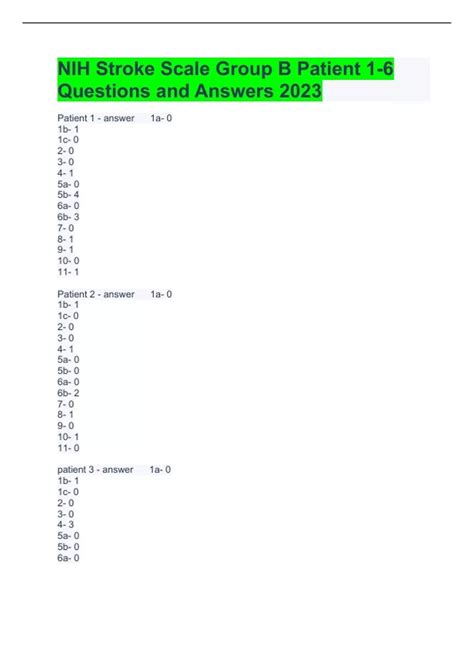
NIH Stroke Scale Group B answers hold a key to unraveling the complexity of stroke severity. This section delves into a comprehensive analysis of the scoring system associated with Group B responses. From sensory loss to language deficits, each component contributes to a holistic understanding of the patient's condition. Examining these answers becomes imperative for healthcare professionals aiming to make informed decisions regarding treatment plans and rehabilitation strategies.
Application in Patient Care: Bridging Theory and Practice
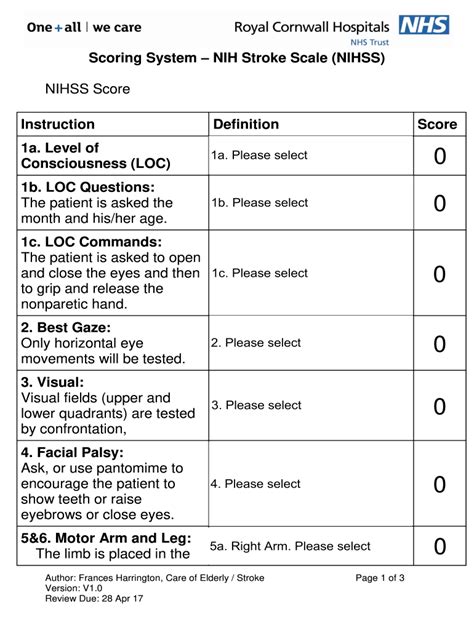
Translating the theoretical knowledge of NIH Stroke Scale Group B into effective patient care strategies is paramount. This segment explores the practical applications of Group B findings in clinical settings. From initiating timely interventions to tailoring rehabilitation programs, healthcare practitioners utilize these insights to enhance overall patient outcomes. The integration of this knowledge ensures a targeted and personalized approach to stroke management.
Scoring System Demystified: Understanding the Numbers

Unpacking the scoring system of the NIH Stroke Scale provides clarity on the numerical representation of neurological deficits. This section navigates through the scoring criteria, offering insights into the significance of each point in the Group B context. A deeper understanding of the scoring system empowers healthcare professionals to discern subtle variations in neurological impairment, guiding them towards precision in diagnosis and prognosis.
Challenges in Group B Assessment: Navigating Complexity
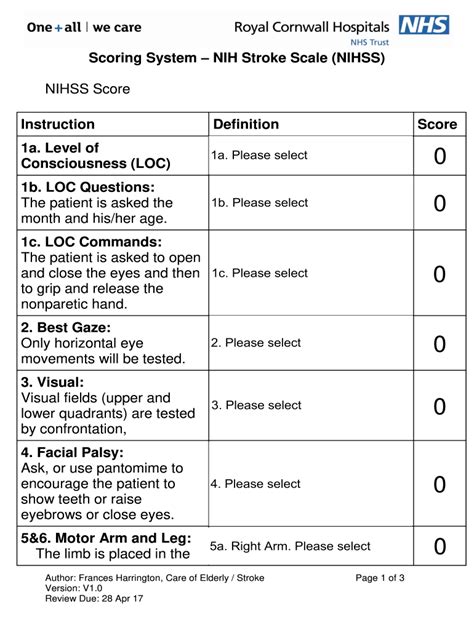
While the NIH Stroke Scale Group B provides a structured framework, its administration comes with its set of challenges. This segment outlines the nuances and potential difficulties encountered in assessing Group B components. From patient cooperation to examiner subjectivity, addressing these challenges is crucial for maintaining the reliability and accuracy of the assessment process.
Future Directions: Advancements in Stroke Severity Assessment
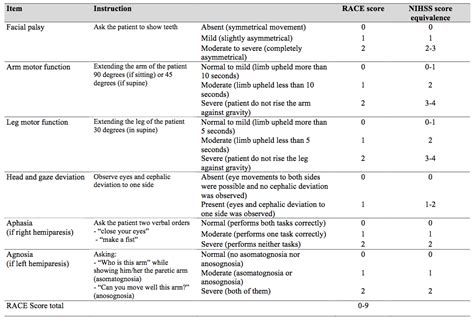
Continual advancements in medical research contribute to the evolution of stroke severity assessment. This portion explores ongoing and prospective developments in the field, ranging from technological innovations to refined evaluation methodologies. Staying abreast of these advancements is pivotal for healthcare professionals seeking to enhance the precision and effectiveness of stroke diagnosis and management.
Interdisciplinary Integration: Collaborative Healthcare Approach
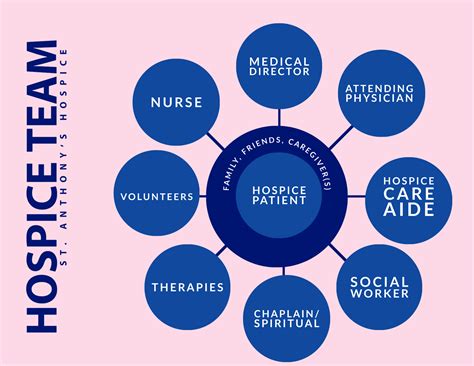
Effectively addressing stroke-related challenges requires a collaborative approach across healthcare disciplines. This segment emphasizes the importance of interdisciplinary integration, showcasing how insights from NIH Stroke Scale Group B contribute to a comprehensive understanding of the patient's condition. Through seamless collaboration, healthcare teams can tailor interventions that address both the immediate and long-term needs of stroke survivors.
Conclusion: Navigating the Landscape of Stroke Assessment
In conclusion, the NIH Stroke Scale Group B answers serve as a cornerstone in the landscape of stroke assessment, guiding healthcare professionals toward a nuanced understanding of neurological deficits. From theoretical foundations to practical applications and future considerations, this article has traversed the diverse facets of stroke severity assessment. As we advance in medical knowledge, the continuous exploration and integration of such insights remain imperative for optimizing patient care and outcomes.
Sources:
1. National Institute of Neurological Disorders and Stroke. (n.d.). NIH Stroke Scale. https://www.ninds.nih.gov/Disorders/Patient-Caregiver-Education/Fact-Sheets/NIH-Stroke-Scale
2. Lyden, P., & Brott, T. (2017). NIH Stroke Scale. StatPearls Publishing. https://www.ncbi.nlm.nih.gov/books/NBK513232/
NIH Stroke Scale Group B Answers in Professional's eye
In the realm of healthcare, the
NIH Stroke Scale stands as a linchpin in the assessment of stroke severity, with its Group B answers assuming a pivotal role in the diagnostic process. As healthcare professionals navigate the intricate landscape of neurological evaluation, understanding the nuances of this standardized tool becomes paramount. Developed by the National Institute of Neurological Disorders and Stroke, the NIH Stroke Scale serves as a comprehensive framework for clinicians to systematically measure and document neurological deficits in patients with acute stroke. Within this context, the Group B answers hold particular significance, encompassing key components such as facial palsy, limb ataxia, and sensory loss. The systematic categorization and scoring of these responses provide a standardized means for healthcare practitioners to gauge the severity of stroke-related impairments, offering a foundation for informed decision-making in patient care.
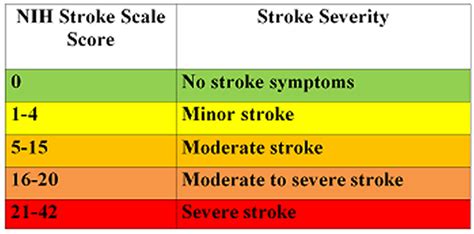
Moving beyond the theoretical foundations, a meticulous analysis of Group B answers reveals the intricacies inherent in the neurological assessment process. Sensory loss, an integral aspect of Group B, encompasses a spectrum of manifestations that demand careful scrutiny. From the perceptual aspects of light touch to the discrimination between sharp and dull stimuli, healthcare professionals must navigate the subtleties of sensory deficits to accurately gauge the extent of neurological impairment. The systematic evaluation of limb ataxia further refines the diagnostic process, shedding light on coordination issues that may arise in the aftermath of a stroke. Through a thorough examination of these components, clinicians gain valuable insights into the specific areas of neurological compromise, laying the groundwork for tailored intervention strategies.
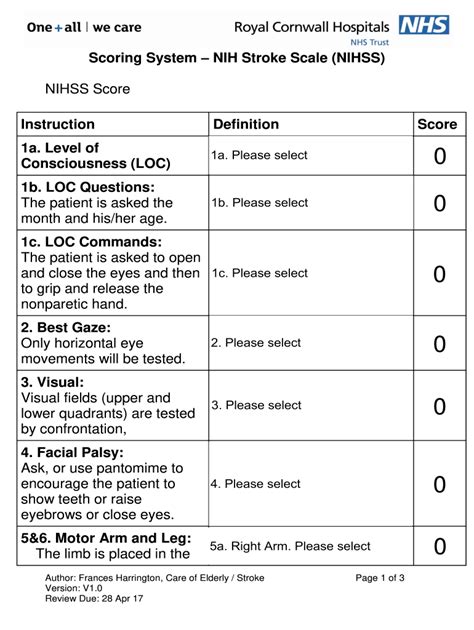
As healthcare practitioners integrate the NIH Stroke Scale into their clinical repertoire, the application of Group B answers extends beyond mere diagnostic categorization. Practical applications in patient care manifest as clinicians utilize these insights to inform treatment plans and rehabilitation strategies. The ability to discern facial asymmetry or identify motor deficits not only aids in immediate decision-making but also serves as a baseline for long-term care planning. The integration of Group B findings becomes a linchpin in the multidisciplinary approach to stroke management, facilitating collaboration among healthcare professionals to address the diverse and evolving needs of stroke survivors.
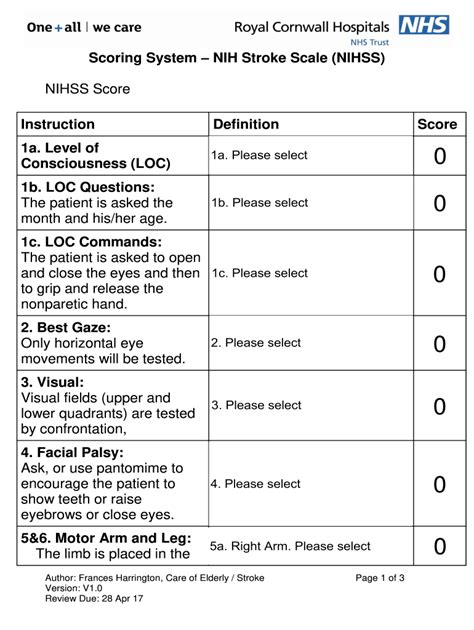
Navigating the scoring system of the NIH Stroke Scale, particularly within the realm of Group B, unveils a numerical representation of neurological deficits. Each point on the scale corresponds to a specific impairment, guiding healthcare practitioners in quantifying the severity of stroke-related impairments. This numerical precision not only facilitates clear communication among healthcare teams but also enables longitudinal tracking of a patient's progress. The scoring system, therefore, serves as a dynamic tool that evolves with the patient's journey, offering a quantitative lens through which to assess the efficacy of interventions and adjust treatment plans accordingly.

Nevertheless, the administration of the NIH Stroke Scale, particularly the Group B components, is not without its challenges. The intricacies of neurological examination, coupled with the potential for subjectivity in interpretation, introduce complexities that demand careful consideration. Patient cooperation and examiner experience further contribute to the variability in assessment outcomes. Addressing these challenges head-on is crucial for maintaining the reliability and accuracy of the NIH Stroke Scale, ensuring that its role as a standardized tool transcends potential pitfalls to deliver consistent and clinically meaningful results.

Looking ahead, the landscape of stroke severity assessment is poised for continuous evolution, with advancements in technology and research shaping the future trajectory. Technological innovations, ranging from neuroimaging modalities to digital health solutions, hold the promise of enhancing the precision and depth of neurological assessments. The integration of artificial intelligence into stroke severity evaluation further opens avenues for efficient and data-driven decision-making. As the healthcare community embraces these advancements, the potential for early detection, targeted interventions, and improved prognostication in stroke management becomes increasingly tangible.

In the broader context of healthcare, the integration of insights from the NIH Stroke Scale Group B goes beyond the confines of neurology departments. The interdisciplinary nature of contemporary healthcare demands collaborative efforts to address the multifaceted challenges posed by stroke. Through the seamless integration of neurological assessments, such as those facilitated by Group B answers, healthcare teams can formulate comprehensive care plans that transcend traditional boundaries. The collaborative approach ensures that stroke survivors receive holistic care, addressing not only the immediate consequences of a stroke but also the long-term implications on quality of life.

In conclusion, the exploration of NIH Stroke Scale Group B answers within the realm of healthcare illuminates a path towards precision, collaboration, and continuous improvement. As a standardized tool, the NIH Stroke Scale provides a framework through which clinicians can systematically assess and document neurological deficits, with Group B answers offering a specific lens into crucial aspects of stroke severity. From sensory loss to motor deficits, each component contributes to a nuanced understanding that informs immediate interventions and shapes long-term care plans. As healthcare continues to advance, the integration of these insights becomes not only a practice of today but a beacon guiding the future of stroke management.
Sources:National Institute of Neurological Disorders and Stroke. (n.d.). NIH Stroke Scale. https://www.ninds.nih.gov/Disorders/Patient-Caregiver-Education/Fact-Sheets/NIH-Stroke-ScaleLyden, P., & Brott, T. (2017). NIH Stroke Scale. StatPearls Publishing. https://www.ncbi.nlm.nih.gov/books/NBK513232/
Point of Views : NIH Stroke Scale Group B Answers
Point of View on Healthcare: Navigating the Terrain of NIH Stroke Scale Group B AnswersThe NIH Stroke Scale as a Foundation: In the intricate tapestry of healthcare, the
NIH Stroke Scale emerges as a foundational framework for assessing the neurological aftermath of strokes. Group B answers within this scale serve as key markers, offering a structured approach to understanding the severity of stroke-related impairments.
Unveiling Neurological Nuances: Delving into Group B answers, we unravel the subtleties of sensory loss, limb ataxia, and facial palsy. Each component contributes a brushstroke to the portrait of neurological deficits, allowing healthcare professionals to paint a clearer picture of a patient's condition.
Practical Applications in Patient Care: Beyond theoretical concepts, the real magic of Group B lies in its application. Clinicians use these insights as a compass, guiding them in tailoring treatment plans and rehabilitation strategies that align with the specific challenges posed by a patient's unique neurological landscape.
The Art of Scoring System: The scoring system embedded in the NIH Stroke Scale, particularly within Group B, transforms neurological deficits into a numerical language. Each point becomes a note in a symphony, allowing healthcare practitioners to orchestrate interventions and track the progress of a patient's recovery.
Challenges as Canvas: While the assessment process is akin to an art, it's not without its challenges. Navigating patient cooperation, examiner subjectivity, and the inherent intricacies of neurological examination, healthcare professionals must skillfully address these challenges to ensure the reliability of their artistic interpretation.
Future Horizons in Stroke Severity: Looking ahead, the landscape of stroke severity assessment becomes a canvas for innovation. Technological brushstrokes, such as neuroimaging modalities and artificial intelligence, promise to enhance the precision of strokes' artistic portrayal, unlocking new dimensions in healthcare.
Interdisciplinary Collaboration as a Mosaic: Beyond the confines of neurology, the integration of Group B insights fosters interdisciplinary collaboration. Like pieces of a mosaic, healthcare professionals from diverse specialties come together, creating a comprehensive picture that addresses the multifaceted needs of stroke survivors.
Conclusion: A Masterpiece in Progress: In the grand gallery of healthcare, the exploration of NIH Stroke Scale Group B answers represents a masterpiece in progress. As clinicians and researchers continue to refine their strokes on this canvas, the evolving understanding of stroke severity becomes not just a practice but an ongoing artistic endeavor, shaping the future of healthcare.
Sources:National Institute of Neurological Disorders and Stroke. (n.d.). NIH Stroke Scale. https://www.ninds.nih.gov/Disorders/Patient-Caregiver-Education/Fact-Sheets/NIH-Stroke-ScaleLyden, P., & Brott, T. (2017). NIH Stroke Scale. StatPearls Publishing. https://www.ncbi.nlm.nih.gov/books/NBK513232/
Conclusion :As we conclude our exploration into the realm of healthcare, delving deep into the intricacies of the NIH Stroke Scale Group B answers, we extend our gratitude to our readers for accompanying us on this enlightening journey. The NIH Stroke Scale, an indispensable tool in the hands of healthcare professionals, has unveiled its profound significance in assessing and categorizing the severity of stroke-related impairments. The nuanced insights garnered from scrutinizing the components of Group B – from sensory loss to limb ataxia – serve as a beacon for clinicians navigating the challenging terrain of neurological assessment.
Our collective journey through the scoring system, practical applications in patient care, and the challenges inherent in Group B assessment has provided a comprehensive understanding of its role in healthcare. The implications extend far beyond the theoretical, influencing immediate interventions, treatment plans, and collaborative efforts among healthcare teams. As we stand at the intersection of precision and innovation, the exploration of NIH Stroke Scale Group B answers not only enhances our current practices but also points toward a future where strokes of insight and technological advancements converge, promising a more refined and compassionate approach to stroke management. We invite you to continue your exploration of healthcare insights with us, as we strive to illuminate the path toward improved patient outcomes and the continual evolution of medical knowledge.
Questions and Answer for NIH Stroke Scale Group B Answers
Wondering about the intricacies of NIH Stroke Scale Group B answers? Here are some common queries that people also ask, coupled with insightful answers to quench your curiosity:
-
Q: What does the NIH Stroke Scale Group B assess?
A: The NIH Stroke Scale Group B assesses specific neurological deficits in stroke patients, including facial palsy, limb ataxia, and sensory loss. It provides a structured framework for healthcare professionals to quantify and document the severity of these impairments.
-
Q: How are Group B answers scored in the NIH Stroke Scale?
A: Each component within Group B, such as facial symmetry and sensory perception, is assigned a numerical score based on the observed level of impairment. The cumulative score aids in quantifying the overall severity of stroke-related deficits.
-
Q: Why is the assessment of sensory loss important in stroke evaluation?
A: Sensory loss, a component of Group B, provides crucial insights into the extent of neurological compromise. Assessing sensory perception aids in tailoring rehabilitation strategies and informing healthcare practitioners about the specific challenges faced by the patient.
-
Q: Are there challenges associated with administering the NIH Stroke Scale Group B?
A: Yes, challenges may arise, including patient cooperation, subjective interpretation, and the inherent complexities of neurological examination. Addressing these challenges is imperative to ensure the accuracy and reliability of the assessment process.
-
Q: How do insights from Group B answers impact patient care?
A: The insights derived from Group B answers play a pivotal role in tailoring patient care plans. They guide immediate interventions, rehabilitation strategies, and collaborative efforts among healthcare teams, ultimately contributing to enhanced patient outcomes.
These questions and answers provide a glimpse into the multifaceted nature of NIH Stroke Scale Group B answers, offering a comprehensive understanding of their significance in the realm of healthcare.
Label :NIH Stroke Scale, Healthcare Insights
Keyword : NIH Stroke Scale Group B Answers

Unlock insights into stroke severity with our article on NIH Stroke Scale Group B answers. Elevate your healthcare knowledge for enhanced patient care.
In the ever-evolving landscape of healthcare, understanding the intricacies of critical assessment tools is paramount. One such tool, the NIH Stroke Scale, plays a pivotal role in evaluating the severity of stroke-related impairments. As we delve into the nuanced world of healthcare, this article aims to shed light on Group B answers associated with the NIH Stroke Scale. An indispensable instrument in the hands of healthcare professionals, the scale's Group B responses hold significant implications for patient care and prognosis. Through a meticulous exploration of these answers, we endeavor to unravel the layers of complexity within this essential framework. Join us in this journey through the corridors of medical knowledge, where clarity and precision intersect to illuminate the path toward enhanced patient outcomes.
Top 10 Points about NIH Stroke Scale Group B Answers :
- Overview of NIH Stroke Scale and its Significance in Healthcare
- The Role of Group B Answers in Stroke Severity Assessment
- Understanding the Scoring System for NIH Stroke Scale Group B
- Interpreting Neurological Implications through Group B Responses
- Clinical Applications: Incorporating Group B Findings in Patient Care
- Comparative Analysis of Group B Answers in Stroke Evaluation
- Implications for Treatment Planning Based on Group B Scores
- Challenges and Considerations in Administering Group B Assessments
- Integration of Group B Data in Multidisciplinary Healthcare Settings
- Future Directions: Advancements in Stroke Severity Assessment
Several facts about NIH Stroke Scale Group B Answers
The Significance of NIH Stroke Scale in Healthcare

As a foundational tool in neurological assessment, the NIH Stroke Scale serves as a critical benchmark in evaluating the severity of stroke-related impairments. Developed by the National Institute of Neurological Disorders and Stroke, this standardized scale enables healthcare professionals to gauge and document the neurological status of patients with acute stroke. Understanding the intricacies of this scale is essential for delivering precise and informed patient care.
Decoding Group B Answers: An In-Depth Analysis

NIH Stroke Scale Group B answers hold a key to unraveling the complexity of stroke severity. This section delves into a comprehensive analysis of the scoring system associated with Group B responses. From sensory loss to language deficits, each component contributes to a holistic understanding of the patient's condition. Examining these answers becomes imperative for healthcare professionals aiming to make informed decisions regarding treatment plans and rehabilitation strategies.
Application in Patient Care: Bridging Theory and Practice

Translating the theoretical knowledge of NIH Stroke Scale Group B into effective patient care strategies is paramount. This segment explores the practical applications of Group B findings in clinical settings. From initiating timely interventions to tailoring rehabilitation programs, healthcare practitioners utilize these insights to enhance overall patient outcomes. The integration of this knowledge ensures a targeted and personalized approach to stroke management.
Scoring System Demystified: Understanding the Numbers

Unpacking the scoring system of the NIH Stroke Scale provides clarity on the numerical representation of neurological deficits. This section navigates through the scoring criteria, offering insights into the significance of each point in the Group B context. A deeper understanding of the scoring system empowers healthcare professionals to discern subtle variations in neurological impairment, guiding them towards precision in diagnosis and prognosis.
Challenges in Group B Assessment: Navigating Complexity

While the NIH Stroke Scale Group B provides a structured framework, its administration comes with its set of challenges. This segment outlines the nuances and potential difficulties encountered in assessing Group B components. From patient cooperation to examiner subjectivity, addressing these challenges is crucial for maintaining the reliability and accuracy of the assessment process.
Future Directions: Advancements in Stroke Severity Assessment

Continual advancements in medical research contribute to the evolution of stroke severity assessment. This portion explores ongoing and prospective developments in the field, ranging from technological innovations to refined evaluation methodologies. Staying abreast of these advancements is pivotal for healthcare professionals seeking to enhance the precision and effectiveness of stroke diagnosis and management.
Interdisciplinary Integration: Collaborative Healthcare Approach

Effectively addressing stroke-related challenges requires a collaborative approach across healthcare disciplines. This segment emphasizes the importance of interdisciplinary integration, showcasing how insights from NIH Stroke Scale Group B contribute to a comprehensive understanding of the patient's condition. Through seamless collaboration, healthcare teams can tailor interventions that address both the immediate and long-term needs of stroke survivors.
Conclusion: Navigating the Landscape of Stroke Assessment
In conclusion, the NIH Stroke Scale Group B answers serve as a cornerstone in the landscape of stroke assessment, guiding healthcare professionals toward a nuanced understanding of neurological deficits. From theoretical foundations to practical applications and future considerations, this article has traversed the diverse facets of stroke severity assessment. As we advance in medical knowledge, the continuous exploration and integration of such insights remain imperative for optimizing patient care and outcomes.
Sources:
1. National Institute of Neurological Disorders and Stroke. (n.d.). NIH Stroke Scale. https://www.ninds.nih.gov/Disorders/Patient-Caregiver-Education/Fact-Sheets/NIH-Stroke-Scale
2. Lyden, P., & Brott, T. (2017). NIH Stroke Scale. StatPearls Publishing. https://www.ncbi.nlm.nih.gov/books/NBK513232/
NIH Stroke Scale Group B Answers in Professional's eye
In the realm of healthcare, the
NIH Stroke Scale stands as a linchpin in the assessment of stroke severity, with its Group B answers assuming a pivotal role in the diagnostic process. As healthcare professionals navigate the intricate landscape of neurological evaluation, understanding the nuances of this standardized tool becomes paramount. Developed by the National Institute of Neurological Disorders and Stroke, the NIH Stroke Scale serves as a comprehensive framework for clinicians to systematically measure and document neurological deficits in patients with acute stroke. Within this context, the Group B answers hold particular significance, encompassing key components such as facial palsy, limb ataxia, and sensory loss. The systematic categorization and scoring of these responses provide a standardized means for healthcare practitioners to gauge the severity of stroke-related impairments, offering a foundation for informed decision-making in patient care.

Moving beyond the theoretical foundations, a meticulous analysis of Group B answers reveals the intricacies inherent in the neurological assessment process. Sensory loss, an integral aspect of Group B, encompasses a spectrum of manifestations that demand careful scrutiny. From the perceptual aspects of light touch to the discrimination between sharp and dull stimuli, healthcare professionals must navigate the subtleties of sensory deficits to accurately gauge the extent of neurological impairment. The systematic evaluation of limb ataxia further refines the diagnostic process, shedding light on coordination issues that may arise in the aftermath of a stroke. Through a thorough examination of these components, clinicians gain valuable insights into the specific areas of neurological compromise, laying the groundwork for tailored intervention strategies.

As healthcare practitioners integrate the NIH Stroke Scale into their clinical repertoire, the application of Group B answers extends beyond mere diagnostic categorization. Practical applications in patient care manifest as clinicians utilize these insights to inform treatment plans and rehabilitation strategies. The ability to discern facial asymmetry or identify motor deficits not only aids in immediate decision-making but also serves as a baseline for long-term care planning. The integration of Group B findings becomes a linchpin in the multidisciplinary approach to stroke management, facilitating collaboration among healthcare professionals to address the diverse and evolving needs of stroke survivors.

Navigating the scoring system of the NIH Stroke Scale, particularly within the realm of Group B, unveils a numerical representation of neurological deficits. Each point on the scale corresponds to a specific impairment, guiding healthcare practitioners in quantifying the severity of stroke-related impairments. This numerical precision not only facilitates clear communication among healthcare teams but also enables longitudinal tracking of a patient's progress. The scoring system, therefore, serves as a dynamic tool that evolves with the patient's journey, offering a quantitative lens through which to assess the efficacy of interventions and adjust treatment plans accordingly.

Nevertheless, the administration of the NIH Stroke Scale, particularly the Group B components, is not without its challenges. The intricacies of neurological examination, coupled with the potential for subjectivity in interpretation, introduce complexities that demand careful consideration. Patient cooperation and examiner experience further contribute to the variability in assessment outcomes. Addressing these challenges head-on is crucial for maintaining the reliability and accuracy of the NIH Stroke Scale, ensuring that its role as a standardized tool transcends potential pitfalls to deliver consistent and clinically meaningful results.

Looking ahead, the landscape of stroke severity assessment is poised for continuous evolution, with advancements in technology and research shaping the future trajectory. Technological innovations, ranging from neuroimaging modalities to digital health solutions, hold the promise of enhancing the precision and depth of neurological assessments. The integration of artificial intelligence into stroke severity evaluation further opens avenues for efficient and data-driven decision-making. As the healthcare community embraces these advancements, the potential for early detection, targeted interventions, and improved prognostication in stroke management becomes increasingly tangible.

In the broader context of healthcare, the integration of insights from the NIH Stroke Scale Group B goes beyond the confines of neurology departments. The interdisciplinary nature of contemporary healthcare demands collaborative efforts to address the multifaceted challenges posed by stroke. Through the seamless integration of neurological assessments, such as those facilitated by Group B answers, healthcare teams can formulate comprehensive care plans that transcend traditional boundaries. The collaborative approach ensures that stroke survivors receive holistic care, addressing not only the immediate consequences of a stroke but also the long-term implications on quality of life.

In conclusion, the exploration of NIH Stroke Scale Group B answers within the realm of healthcare illuminates a path towards precision, collaboration, and continuous improvement. As a standardized tool, the NIH Stroke Scale provides a framework through which clinicians can systematically assess and document neurological deficits, with Group B answers offering a specific lens into crucial aspects of stroke severity. From sensory loss to motor deficits, each component contributes to a nuanced understanding that informs immediate interventions and shapes long-term care plans. As healthcare continues to advance, the integration of these insights becomes not only a practice of today but a beacon guiding the future of stroke management.
Sources:National Institute of Neurological Disorders and Stroke. (n.d.). NIH Stroke Scale. https://www.ninds.nih.gov/Disorders/Patient-Caregiver-Education/Fact-Sheets/NIH-Stroke-ScaleLyden, P., & Brott, T. (2017). NIH Stroke Scale. StatPearls Publishing. https://www.ncbi.nlm.nih.gov/books/NBK513232/
Point of Views : NIH Stroke Scale Group B Answers
Point of View on Healthcare: Navigating the Terrain of NIH Stroke Scale Group B AnswersThe NIH Stroke Scale as a Foundation: In the intricate tapestry of healthcare, the
NIH Stroke Scale emerges as a foundational framework for assessing the neurological aftermath of strokes. Group B answers within this scale serve as key markers, offering a structured approach to understanding the severity of stroke-related impairments.
Unveiling Neurological Nuances: Delving into Group B answers, we unravel the subtleties of sensory loss, limb ataxia, and facial palsy. Each component contributes a brushstroke to the portrait of neurological deficits, allowing healthcare professionals to paint a clearer picture of a patient's condition.
Practical Applications in Patient Care: Beyond theoretical concepts, the real magic of Group B lies in its application. Clinicians use these insights as a compass, guiding them in tailoring treatment plans and rehabilitation strategies that align with the specific challenges posed by a patient's unique neurological landscape.
The Art of Scoring System: The scoring system embedded in the NIH Stroke Scale, particularly within Group B, transforms neurological deficits into a numerical language. Each point becomes a note in a symphony, allowing healthcare practitioners to orchestrate interventions and track the progress of a patient's recovery.
Challenges as Canvas: While the assessment process is akin to an art, it's not without its challenges. Navigating patient cooperation, examiner subjectivity, and the inherent intricacies of neurological examination, healthcare professionals must skillfully address these challenges to ensure the reliability of their artistic interpretation.
Future Horizons in Stroke Severity: Looking ahead, the landscape of stroke severity assessment becomes a canvas for innovation. Technological brushstrokes, such as neuroimaging modalities and artificial intelligence, promise to enhance the precision of strokes' artistic portrayal, unlocking new dimensions in healthcare.
Interdisciplinary Collaboration as a Mosaic: Beyond the confines of neurology, the integration of Group B insights fosters interdisciplinary collaboration. Like pieces of a mosaic, healthcare professionals from diverse specialties come together, creating a comprehensive picture that addresses the multifaceted needs of stroke survivors.
Conclusion: A Masterpiece in Progress: In the grand gallery of healthcare, the exploration of NIH Stroke Scale Group B answers represents a masterpiece in progress. As clinicians and researchers continue to refine their strokes on this canvas, the evolving understanding of stroke severity becomes not just a practice but an ongoing artistic endeavor, shaping the future of healthcare.
Sources:National Institute of Neurological Disorders and Stroke. (n.d.). NIH Stroke Scale. https://www.ninds.nih.gov/Disorders/Patient-Caregiver-Education/Fact-Sheets/NIH-Stroke-ScaleLyden, P., & Brott, T. (2017). NIH Stroke Scale. StatPearls Publishing. https://www.ncbi.nlm.nih.gov/books/NBK513232/
Conclusion :As we conclude our exploration into the realm of healthcare, delving deep into the intricacies of the NIH Stroke Scale Group B answers, we extend our gratitude to our readers for accompanying us on this enlightening journey. The NIH Stroke Scale, an indispensable tool in the hands of healthcare professionals, has unveiled its profound significance in assessing and categorizing the severity of stroke-related impairments. The nuanced insights garnered from scrutinizing the components of Group B – from sensory loss to limb ataxia – serve as a beacon for clinicians navigating the challenging terrain of neurological assessment.
Our collective journey through the scoring system, practical applications in patient care, and the challenges inherent in Group B assessment has provided a comprehensive understanding of its role in healthcare. The implications extend far beyond the theoretical, influencing immediate interventions, treatment plans, and collaborative efforts among healthcare teams. As we stand at the intersection of precision and innovation, the exploration of NIH Stroke Scale Group B answers not only enhances our current practices but also points toward a future where strokes of insight and technological advancements converge, promising a more refined and compassionate approach to stroke management. We invite you to continue your exploration of healthcare insights with us, as we strive to illuminate the path toward improved patient outcomes and the continual evolution of medical knowledge.
Questions and Answer for NIH Stroke Scale Group B Answers
Wondering about the intricacies of NIH Stroke Scale Group B answers? Here are some common queries that people also ask, coupled with insightful answers to quench your curiosity:
-
Q: What does the NIH Stroke Scale Group B assess?
A: The NIH Stroke Scale Group B assesses specific neurological deficits in stroke patients, including facial palsy, limb ataxia, and sensory loss. It provides a structured framework for healthcare professionals to quantify and document the severity of these impairments.
-
Q: How are Group B answers scored in the NIH Stroke Scale?
A: Each component within Group B, such as facial symmetry and sensory perception, is assigned a numerical score based on the observed level of impairment. The cumulative score aids in quantifying the overall severity of stroke-related deficits.
-
Q: Why is the assessment of sensory loss important in stroke evaluation?
A: Sensory loss, a component of Group B, provides crucial insights into the extent of neurological compromise. Assessing sensory perception aids in tailoring rehabilitation strategies and informing healthcare practitioners about the specific challenges faced by the patient.
-
Q: Are there challenges associated with administering the NIH Stroke Scale Group B?
A: Yes, challenges may arise, including patient cooperation, subjective interpretation, and the inherent complexities of neurological examination. Addressing these challenges is imperative to ensure the accuracy and reliability of the assessment process.
-
Q: How do insights from Group B answers impact patient care?
A: The insights derived from Group B answers play a pivotal role in tailoring patient care plans. They guide immediate interventions, rehabilitation strategies, and collaborative efforts among healthcare teams, ultimately contributing to enhanced patient outcomes.
These questions and answers provide a glimpse into the multifaceted nature of NIH Stroke Scale Group B answers, offering a comprehensive understanding of their significance in the realm of healthcare.
Label :NIH Stroke Scale, Healthcare Insights
Keyword : NIH Stroke Scale Group B Answers
0 komentar